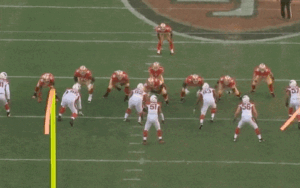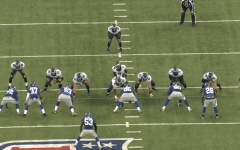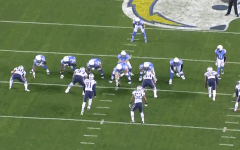McCoy, Murray & Matthews Transactions Show Eagles Understand “Fit”
At this juncture in the NFL calendar, franchises are deeply engrossed in their preparatory phase, assembling the necessary components in the hopes of crafting something substantial for the upcoming fall season.
This particular moment in time witnesses the highest influx of veteran player transactions, encompassing trades, releases, and retirements akin to Patrick Willis.
It’s also the period when one can expect to witness a few eyebrow-raising moves.
The most perplexing move during this initial, frenzied week of the offseason was the exchange of running back LeSean McCoy from the Philadelphia Eagles for middle linebacker Kiko Alonso from the Buffalo Bills.
Alonso shares a history with Eagles coach Chip Kelly from their time at Oregon, although the linebacker sat out the entirety of the previous season due to a torn ACL.
So, why swap out one of the premier running backs in the league for a middle linebacker who was sidelined the entire previous season? At first glance, it appeared to be an unfavorable trade…

Nonetheless, there is a calculated strategy behind Kelly’s seemingly unconventional approach.
Early reports from Philadelphia in the week suggested that the Eagles were aggressively pursuing Frank Gore, a running back who could be acquired at a more economical price compared to what it would have taken to keep McCoy.
Moreover, Gore brings a distinctive running style to the table. The former San Francisco 49er is a formidable power back, quickly gaining momentum as he charges straight between the tackles.
While he may execute a cutback, it’s an assertive, single-gap maneuver (refer to the GIF).
Kelly was well aware that free agency would present a multitude of potent power backs, such as Gore and Mark Ingram, who could be acquired at a fraction of McCoy’s cost while still thriving in his power-running scheme.
Ingram secured a four-year deal worth $16 million with his current team, the New Orleans Saints, which is nearly a third of McCoy’s earnings in Buffalo.
(Meanwhile, Gore inked a three-year, $12 million contract with the Indianapolis Colts, including $7.5 million guaranteed on Tuesday).
Another avenue for Kelly to find a player who suited his preferences was the remarkably deep pool of specialized power backs in this year’s draft, like Todd Gurley from Georgia and Melvin Gordon from Wisconsin.
Kelly had a plethora of options to secure a more budget-friendly alternative to McCoy, ensuring that his offense could still operate at its peak effectiveness.
Within the confines of the salary cap system, uncovering these avenues of roster efficiency is paramount.

When up against Kelly’s offense, which hinges on speed, creating space, and exploiting the edges, defenses tend to transition into a more finesse-oriented, reactive mode.
By incorporating a downhill runner who excels between the tackles rather than a more finesse-oriented east-west player like McCoy (refer to GIF), the Eagles naturally adopt a more balanced offensive approach, blending power with speed.
Undoubtedly, McCoy’s run showcased impressive agility – he managed to maneuver the play all the way back across several gaps to break out for a significant gain towards the outer edge.
However, this instance exemplifies the offense adapting to accommodate the strengths of a player – a notably high-priced player – rather than adhering to the preferences of the strategist.
DeMarco Murray & Ryan Matthews Signings
The acquisition of power runners DeMarco Murray and Ryan Matthews by the Eagles yesterday suggests that Kelly wasn’t simply prioritizing cost savings in his pursuit of the ideal player.
He was more inclined to invest in runners of his preferred style, even if it meant incurring higher costs.
A noteworthy aspect of this deal is that while Murray and McCoy reportedly command similar annual averages of around $8 million, the guaranteed portion of McCoy’s contract is nearly equivalent to the combined guarantees given to Murray and Matthews.
It seems Kelly not only secured the player(s) he desired, but also executed some shrewd roster management, effectively achieving a two-for-one benefit.

Setting the cost factor aside, it’s possible to discover players who align more closely with what your offense aims to achieve yet can still deliver comparable yardage gains without the flashiness.
While McCoy’s run showcased brilliance, this misdirection, backside flash play executed by Ryan Matthews with the Chargers last season embodies a concept that you’ll encounter in Kelly’s offense, ultimately yielding a similar yardage outcome as the jaw-dropping play (refer to GIF).

In NFL offenses, it’s akin to a pitcher wielding both a formidable fastball (a swift passing game) and a potent change-up (a powerful running game), leaving opponents in a constant state of uncertainty.
Last season, only a handful of NFL teams effectively embraced this strategy.
The Green Bay Packers leaned on Eddie Lacy, the Seattle Seahawks relied on Marshawn Lynch, and the New England Patriots had LeGarrette Blount (a former Oregon Duck under Chip Kelly) and Jonas Gray carrying out this dynamic approach.
These teams adopted spread formations similar to the Eagles. And when defenses anticipated the misdirection tactics of a ‘finesse’ approach, these offenses would entrust the ball to a highly physical runner.
As we’ve observed over the past few years, a team must strike a balance between power and speed to secure a championship.
The Patriots illustrated the effectiveness of the spread passing game combined with a robust rushing attack in the playoffs.
In their divisional victory against the Baltimore Ravens, New England attempted only four running plays throughout the entire game.
However, the following week against Indianapolis, New England heavily emphasized the run, executing 40 rushes for a total of 177 yards.
Consider the challenge the Colts faced in preparing for the Patriots. Indianapolis defenders likely envisioned and prepared for a finesse-oriented spread offense, only to be met with a relentless display of smash-mouth football instead.

The inclusion of a power runner brings a crucial element of balance to the Eagles’ offense.
Kelly recognizes that a team can make it to the playoffs with a single-minded approach.
However, to secure championships, a franchise requires a blend of power and speed.
This is why Kelly opted to trade a costly finesse-oriented running back known for his bounce-cut moves in exchange for runners who offer a more effective counterbalance to the rest of his offensive scheme.
Contrary to the sensationalized ‘crazy Chip Kelly!’ narrative being portrayed in the media, as the dust settles, it appears to be a shrewd assessment of fit and value in the competitive race to field a team that truly excels in the fall.

